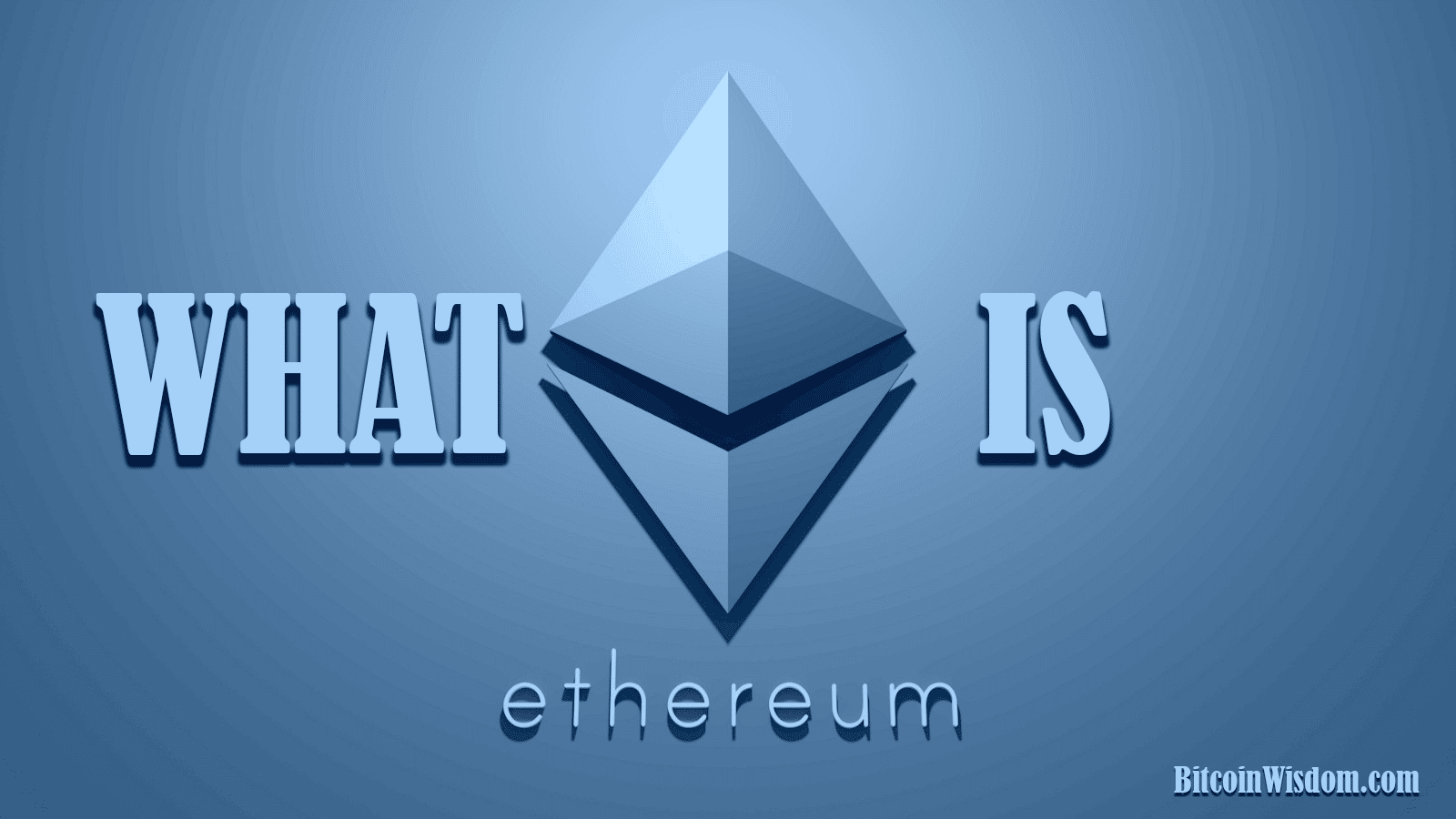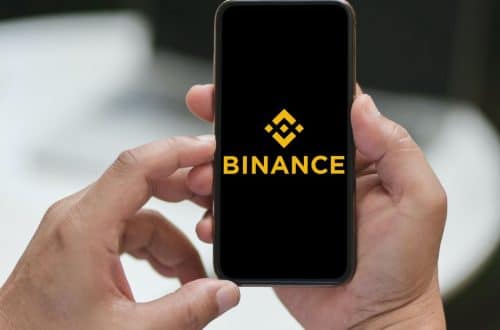
What is Ethereum
Overview
A Complete Guide to Ethereum: What It Is, How It Works, and Why You Should Care
What is Ethereum? You have probably heard the term tossed around in the news without fully understanding it or how it works.
In this blog post, we’ll provide a comprehensive explanation and everything you need to know about it.
We will cover what Ethereum is, how it works, why you should care, and more! So if you want to learn everything about Ethereum, keep reading!
What is Ethereum?

In the simplest terms, Ethereum is a decentralized platform that runs smart contracts.
What are smart contracts? Smart contracts are applications that run exactly as programmed without any possibility of fraud or third-party interference.

Ethereum is not just a blockchain technology, it is also a decentralized platform that runs smart contracts.
In other words, Ethereum is a programmable blockchain.
Ethereum apps run on a custom built blockchain, an enormously powerful shared global infrastructure that can move value around and represent the ownership of property.
So, Ethereum apps are decentralized like Bitcoin, but they can do much more.
Brief History of Ethereum
Ethereum was first proposed in 2013 by Vitalik Buterin, a Russian-Canadian programmer.
He was 19 years old at the time.
Buterin had been involved in the development of Bitcoin, but he thought that it had limitations.
He believed that Bitcoin needed a scripting language for developers to build applications on top of the blockchain.
Buterin proposed the creation of a new platform, Ethereum, that would be able to run smart contracts.
In 2014, Ethereum was launched with a crowd sale.
This is when developers raised money by selling Ether, the native currency of Ethereum.
The sale raised $18 million, which was used to fund the development of the Ethereum protocol.
In 2015, Ethereum launched its first version, Frontier.
This was followed by Homestead in 2016 and Metropolis in 2017.
Ethereum is currently working on its fourth version, Serenity, which is expected to be released in 2020.
A lot has changed since Ethereum was first proposed in 2013.
The price of Ether has risen from $0.20 to over $200.
And the Ethereum network now has over 30,000 nodes.
But one thing remains the same: Ethereum is still the leading platform for decentralized applications.
What Problems Does Ethereum Solve?
Before we get into how Ethereum works, it is important to understand the problem that it solves.
Our current system runs on a “trusted third party.”
This means central points of control, such as banks, governments, and corporations.
These institutions have the power to censor or freeze accounts.
They can also prevent certain transactions from being made.
Ethereum solves this problem by replacing the need for a trusted third party with cryptography and code.
By doing this, Ethereum makes it possible to create applications that run exactly as programmed without any possibility of fraud or third-party interference.
What exactly does Ethereum do?
As mentioned already, Ethereum is a decentralized platform that runs smart contracts.
But what does that actually mean?
Ethereum enables developers to build and deploy decentralized applications.
A decentralized application is an app that runs on a decentralized network, as opposed to a single computer or server.
Ethereum is often described as a digital machine that can execute programs exactly as they are programmed with no possibility of fraud or third-party interference.
How Does Ethereum Work?
Ethereum has two main components: the Ethereum Virtual Machine (EVM) and the Ethereum blockchain.
Ethereum Virtual Machine (EVM)
The EVM is a Turing-complete virtual machine that runs smart contracts.
This means that it can run any program, no matter how complex it is.
The EVM is responsible for processing and executing contracts.
It is what makes it possible to create applications on Ethereum.
Ethereum Blockchain
The Ethereum blockchain is a global, decentralized computer.
It comprises a network of computers, called nodes, that run the EVM.
The blockchain is responsible for storing data about smart contracts, such as the results of a voting application.
It is also responsible for processing transactions made by users on the network.
When both of these components are combined, they can create applications that run exactly as programmed.
Ethereum Vs Bitcoin
Ethereum and Bitcoin are both decentralized platforms.
However, they have different purposes.
Here are some key takeaways:
- Bitcoin is a digital currency that allows for peer-to-peer transactions without the need for a third party
- Ethereum is a decentralized platform that runs smart contracts – applications that run exactly as programmed without any possibility of fraud or third party interference
- Ethereum was created to address some of the flaws inherent in Bitcoin, such as high energy consumption and low transaction speeds
- Ethereum has seen significant growth in recent years and is now one of the most popular cryptocurrencies in the world

Let’s dive a little deeper into each of these points.
Bitcoin was created with one intention: to be a digital currency.
It allows for peer-to-peer transactions without the need for a third party. This is similar to how Ethereum works.
However, there are some key differences.
First, Bitcoin is not a platform.
This means that it cannot run smart contracts.
Ethereum, on the other hand, was created to be a platform. So developers can build decentralized applications on top of it.
Second, Bitcoin, as the first cryptocurrency, has some inherent flaws.
One of these is high energy consumption.
Bitcoin mining, which is how new Bitcoin is created, consumes a lot of energy.
In fact, it is estimated that Bitcoin mining uses more electricity than the entire country of Ireland!
Ethereum has addressed this problem by making its blockchain more efficient.
Another flaw inherent in Bitcoin is slow transaction speeds.
This is because Bitcoin can only process a maximum of seven transactions per second.
Ethereum, on the other hand, can process around fifteen transactions per second with gas fees.
Note: The gas price is determined by the congestion of the network.
Finally, Ethereum has seen significant growth in recent years.
It is now one of the most popular cryptocurrencies in the world.
This is due to its potential for running smart contracts and faster transaction speeds.
Ethereum’s Native Currency – Ether
Ether is the native currency of Ethereum.
It is used to pay for transaction fees and gas costs.
Ether can also be used to pay for other services on the Ethereum network, such as decentralized applications.
Ether is different from Bitcoin in a few key ways.
First, Ether is not mined like Bitcoin.
Instead, it is created through a process called “proof of work”.
Second, Ether has a different purpose than Bitcoin.
While Bitcoin was created to be a digital currency, Ether was created to power the Ethereum network.
Third, Ether is not as scarce as Bitcoin.
While there are only 21 million Bitcoin that will ever be mined, there is no limit to the amount of Ether that can be created.
Fourth, Ether is more divisible than Bitcoin.
The smallest unit of Ether is called a “wei”.
There are 1,000,000,000,000,000,000 wei in 1 Ether.
This makes Ether more suitable for everyday transactions than Bitcoin.
Ethereum’s Popularity
Ethereum is the second most popular cryptocurrency after Bitcoin.
This is due to its potential for running smart contracts and faster transaction speeds.
Ethereum is also more affordable than Bitcoin.
The average transaction fee for Ethereum is around $12, while the average transaction fee for Bitcoin is around $25.
This makes Ethereum a more attractive option for those looking to use cryptocurrency for everyday purchases.
Ethereum is also popular with developers.
This is because Ethereum offers a more robust platform for building decentralized applications.
What are the Potential Use Cases for Ethereum?
Ethereum has a lot of potential uses.
Here are some of the most popular:
- Decentralized application
- Digital currency
- Smart contracts
- Tokenized assets
- Revolutionalize the internet of things (IoT)
- Store data and track assets
Decentralized application
A decentralized application (DApp) is an application that can operate independently without centralized governance.
Ethereum is the most popular platform for creating DApps.

DApps are often used to create DAOs (decentralized autonomous organizations).
Examples of DApps include Augur, a prediction market, and MakerDAO, a lending platform.
Digital currency
Digital currencies are electronic versions of traditional fiat currencies.
Ethereum is home to a digital currency called Ether.
Ether is used to pay for gas fees, but it can be used to pay for goods and services or traded on cryptocurrency exchanges.
Smart contracts
Ethereum’s smart contract capability is one of its most popular use cases.
It can be used to create contracts automatically executed when certain conditions are met.
This could be used to create things like will, insurance policies, or loans.
Tokenized assets
Another popular use case for Ethereum is tokenizing assets.
This means creating a digital version of an asset, such as gold or real estate.
Ethereum can be used to create tokens that represent these assets.
Revolutionalize the internet of things (IoT)
The internet of things (IoT) is a network of physical devices connected to the internet.
Ethereum can be used to create smart contracts that track and manage these devices.
This could potentially revolutionize the way we interact with the IoT.
Store data and track assets
Ethereum can also be used to store data.
This data can be tracked and managed using smart contracts.
This could track things like shipping containers or real estate properties.
These are just some of the potential use cases for Ethereum.
As this new technology continues to develop, we will see even more innovative uses for it.
Ethereum transactions
Ethereum transactions are different from Bitcoin transactions in a few key ways.
First, Ethereum transactions can be used to send Ether, or they can be used to send a smart contract.
Second, Ethereum transactions are verified by nodes in the network using a process called mining.
Third, each Ethereum transaction has a gas limit, which is the maximum amount of computational power that can be used to execute the transaction.
This is different from Bitcoin, which has a fixed block size.
Fourth, Ethereum transactions can be executed on the Ethereum Virtual Machine (EVM).
Applications built on Ethereum
In this section, we’re going to explore some applications that have been built on Ethereum.
Some of the most popular applications that have been built on Ethereum include:
- Decentralized exchanges
- Decentralized finance platforms
- Prediction markets
- Identity management systems
- Gaming platforms
- Social networks
Let’s look at examples in each of these categories.
Decentralized exchanges
Decentralized exchanges are platforms that allow users to trade cryptocurrencies without the need for a central authority.
Some popular decentralized exchanges include:
- 1inch: DEX aggregator and a single point of entry for DeFi
- Kyber Network: On-chain liquidity protocol that allows decentralized token swaps
- Uniswap: Protocol for swapping ERC20 tokens on the Ethereum blockchain
Decentralized finance platforms
Decentralized finance platforms are a new category of applications that are built on Ethereum.
These platforms allow users to lend, borrow, and trade cryptocurrencies in a decentralized manner.
Some popular decentralized finance platforms include:
- Maker: Protocol for lending and borrowing cryptocurrencies
- Compound: Protocol for lending and borrowing cryptocurrencies
- Dharma: Protocol for peer-to-peer lending
Prediction markets
Prediction markets are platforms that allow users to bet on the outcome of events.
Some popular prediction markets include:
- Augur: Decentralized prediction market platform
- Gnosis: Protocol for creating and participating in prediction markets
Identity management systems
Identity management systems are platforms that allow users to manage their digital identities in a decentralized manner.
Some popular identity management systems include:
- uPort: Self-sovereign identity management system
- ShoCard: Blockchain-based digital identity platform
- Gaming platforms
Gaming platforms are platforms that allow users to play games in a decentralized manner.
Some popular gaming platforms include:
- Ether Kingdoms: Multiplayer online game that allows players to earn cryptocurrency
- CryptoKitties: Game that allows players to buy, sell, and breed digital cats
Social networks
Social networks are platforms that allow users to connect with each other in a decentralized manner.
Some popular social networks include:
- Status: Decentralized social network
- Steemit: Social media platform that rewards users with cryptocurrency
As you can see, there are a wide variety of applications that have been built on Ethereum.
Ethereum 2.0 – The Next Upgrade
Ethereum 2.0 is coming.
This upgrade to the Ethereum network addresses some of its critical deficiencies, namely scalability, and security.
With Ethereum 2.0, the network will be able to process many more transactions per second than it can currently and do so much more securely.
Ethereum 2.0 is still in development and is expected to be released in stages over the next few years.
In the meantime, here’s everything you need to know about this hugely anticipated upgrade to the Ethereum network.
What is Ethereum 2.0?
Ethereum 2.0 is an upgrade to the Ethereum network designed to improve its scalability and security.
At present, the Ethereum network can process around 15 transactions per second.
This is not nearly enough to meet the demand for a mainstream cryptocurrency.
For comparison, Visa can handle around 24,000 transactions per second.
Ethereum 2.0 aims to increase the network’s transaction capacity to around 100,000 per second.
To do this, Ethereum 2.0 will employ a new system called sharding.
Sharding is dividing the Ethereum network into multiple smaller networks or shards.
Each shard will be able to process transactions in parallel, dramatically increasing the overall transaction capacity of the network.
In addition to increasing transaction capacity, Ethereum 2.0 will also improve the network’s security.
Currently, the Ethereum network is secured by a consensus algorithm called Proof of Work (PoW).
Under PoW, miners compete to solve mathematical problems to validate transactions and add new blocks to the blockchain.
However, PoW is very resource-intensive and requires a large amount of electricity to power the miners’ computers.
Ethereum 2.0 will replace PoW with a new consensus algorithm called Proof of Stake (PoS).
Under PoS, miners will stake their ETH to validate transactions and add new blocks to the blockchain.
This will significantly reduce the amount of electricity needed to power the Ethereum network, making it more environmentally friendly.
When will Ethereum 2.0 be released?
Ethereum 2.0 is currently in development and is expected to be released in stages over the next few years.
The first stage, called Phase 0, is expected to be launched in 2020.
Phase 0 will see the launch of the Ethereum 2.0 network with a new consensus algorithm, Proof of Stake.
However, Phase 0 will not yet offer any increase in transaction capacity.
This will come in later stages.
What are the benefits of Ethereum 2.0?
There are two main benefits of Ethereum 2.0: increased scalability and improved security.
The increased scalability of the network will allow it to process many more transactions per second, making it more suitable for mainstream use.
The improved security of the network will make it more environmentally friendly and resistant to attacks.
What are the risks of Ethereum 2.0?
There are a few risks associated with Ethereum 2.0.
First, there is the risk that the upgrade will not be completed on time or will not meet its goals.
Second, there is the risk that Ethereum 2.0 will not be compatible with existing decentralized applications (dApps).
This could lead to a loss of users and value for Ethereum.
Third, there is the risk of a fork.
A fork is when a cryptocurrency splits into two separate currencies.
This could happen if the Ethereum community didn’t agree on the upgrade direction.
Fourth, there is the risk that Ethereum 2.0 will not be able to attract enough users to be successful.
This is a risk for all new cryptocurrencies and blockchain projects.
What should I do if I want to invest in Ethereum 2.0?
If you’re interested in investing in Ethereum 2.0, we recommend doing your own research before making any investment decisions.
Investing in cryptocurrency is risky, and you should never invest more than you can afford to lose.
We also recommend diversifying your portfolio and investing in various cryptocurrencies.
This will help to mitigate the risks associated with any one particular investment.
How to Buy and Store Ethereum
Now that you know what Ethereum is, you may be wondering how to buy it.
Ethereum can be bought on cryptocurrency exchanges.
It can also be bought using traditional fiat currencies, such as US dollars.
You can sign up for an account on an exchange like Coinbase, Kraken, or Bitstamp.
Once you have an account, they have a detailed process for buying Ethereum.
Finally, once you have bought Ethereum, you will need to store it in a digital wallet.
Ethereum wallets can be software, hardware, or paper.
The most popular software wallets are MetaMask and Trustwallet.

MetaMask is a browser extension that allows you to interact with DApps without having to run a full Ethereum node.
Trust wallet is a mobile wallet that supports Ethereum and other cryptocurrencies.
You can also use a hardware wallet like the Ledger Nano S to store your Ethereum.
Once you have chosen a wallet, you will need to set up an account.
You can do this by creating a new wallet or importing an existing one.
Again, these instructions will vary depending on the type of wallet you are using.
Once you have set up your account, you will be able to receive, send, and store Ethereum.
Should I buy Ethereum?
Now that you know what Ethereum is and how to buy it, you may be wondering if you should invest in it.
As with any investment, you should always do your own research before making a decision.
However, Ethereum does have a lot of potentials.
It is still a relatively new technology, and it is constantly evolving.
It has already been used to create some incredible applications, and we are sure to see even more in the future.
The Future of Ethereum is very bright.
It has a lot of potential uses, and it is already one of the most popular cryptocurrencies in the world.
As more people learn about Ethereum and how it works, we will see even more growth in this exciting new technology.
Ethereum has the potential to change the way we interact with the internet and revolutionize many industries.
While competitions like EOS and TRON are trying to do the same thing, Ethereum has a significant head start.
It is the most popular platform for creating DApps, and it has a strong community of developers.
The future of Ethereum is very exciting, and we can’t wait to see what this new technology will bring.
Key Takeaways
- Ethereum is a decentralized platform that runs smart contracts: applications that run exactly as programmed without any possibility of fraud or third-party interference.
- Ethereum is used to build Decentralized Applications (DApps) on the Ethereum blockchain. DApps are similar to traditional applications, but they are built on a decentralized network and run on smart contracts.
- Ethereum is still a new technology and is constantly evolving. It has a lot of potential uses, and we are sure to see even more in the future.
- The future of Ethereum is very exciting, and we can’t wait to see what this new technology will bring.
I hope this article has helped you to understand Ethereum a little better.
Have any questions?
Feel free to ask in the comments below!






